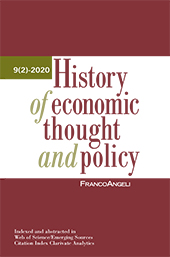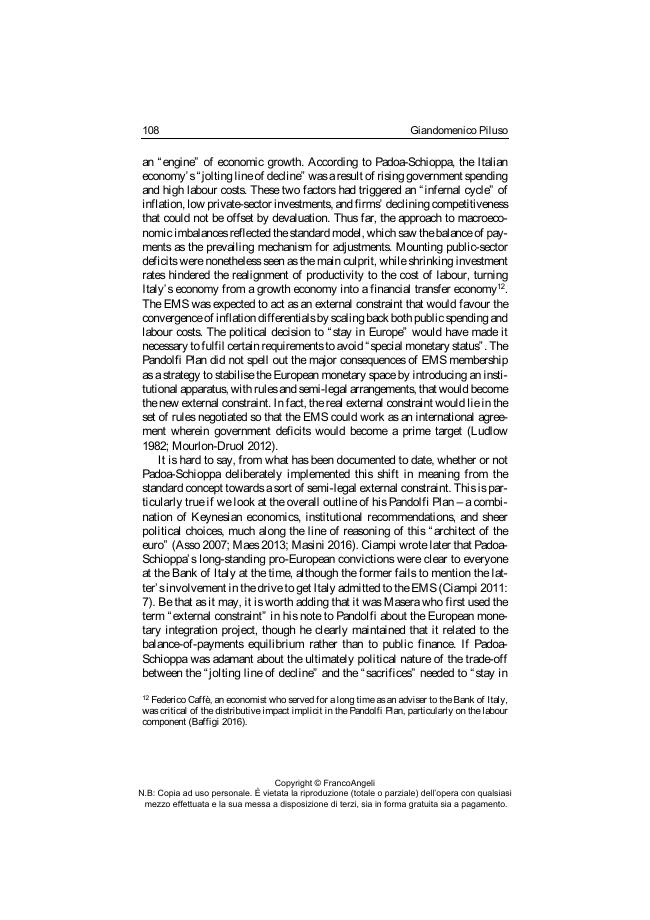Reshaping the external constraint : Franco Modigliani, Tommaso Padoa-Schioppa and the EMS, 1977-1993
97-119 p.
During a decade of stagflation in the 1970s, a sea of changes on the international stage led to major macroeconomic imbalances that gave central bankers a different role in relation to governments and policymakers. In Europe, this coincided with the relaunching of the project for European integration. The Italian case shows how governments and central bankers interacted in shaping adjustment strategies. The Bank of Italy had a pivotal role in shaping the country's economic policies, relying on its capacity for economic analysis. The adjustment strategy formulated in the "Pandolfi Plan" of 1978 was conceived largely by an economist at the Bank of Italy, Tommaso PadoaSchioppa. Further developing analyses conducted jointly with Franco Modigliani the previous year, the plan focused on the macroeconomic effects of high labour costs in the wake of a full ("100% and plus") wage indexing and rising government deficits.
The policy proposal revolved around a few targets, namely investments and economic growth, and an explicit principle of fairness in the labour market. The Pandolfi Plan pledged to Italy's enduring participation in the European integration process by combining economic development with adhesion to the "European choice", which meant joining the European Monetary System (EMS). The European agreements governing EMS membership replaced the standard external economic constraints, i.e. the balance of payments and exchange rate, with a new kind of semilegal external constraint ingrained in the governance structure of the European Community. The nature of this new semilegal external constraint as a fiscal discipline mechanism eventually emerged more clearly with the Maastricht Treaty. [Publisher's text].
Forma parte de
History of Economic Thought and Policy : 2, 2020-
Artículos del mismo número (disponibles individualmente)
-
Información
Código DOI: 10.3280/SPE2020-002006
ISSN: 2280-188X
KEYWORDS
- European Monetary System-EMS, Franco Modigliani, Tommaso Padoa-Schioppa, external constraints, Keynesian economics, Ordoliberalism, optimal currency area



